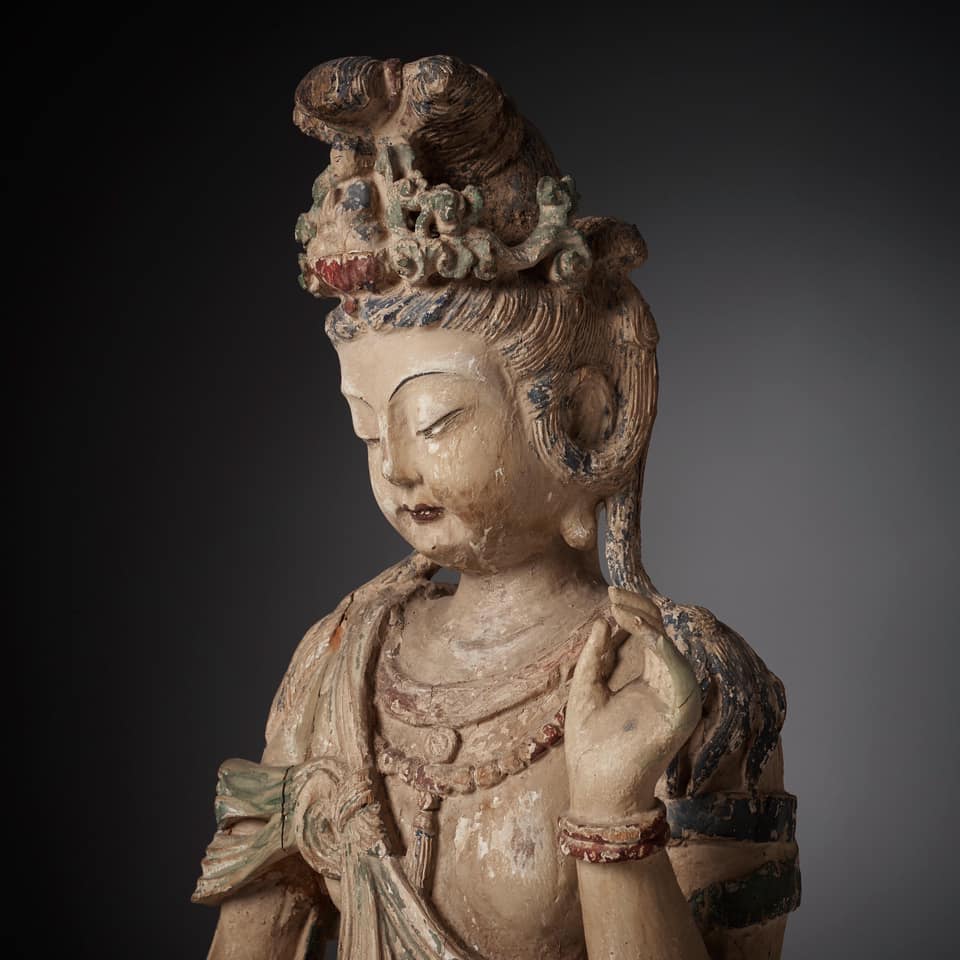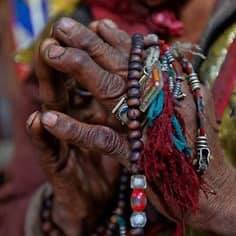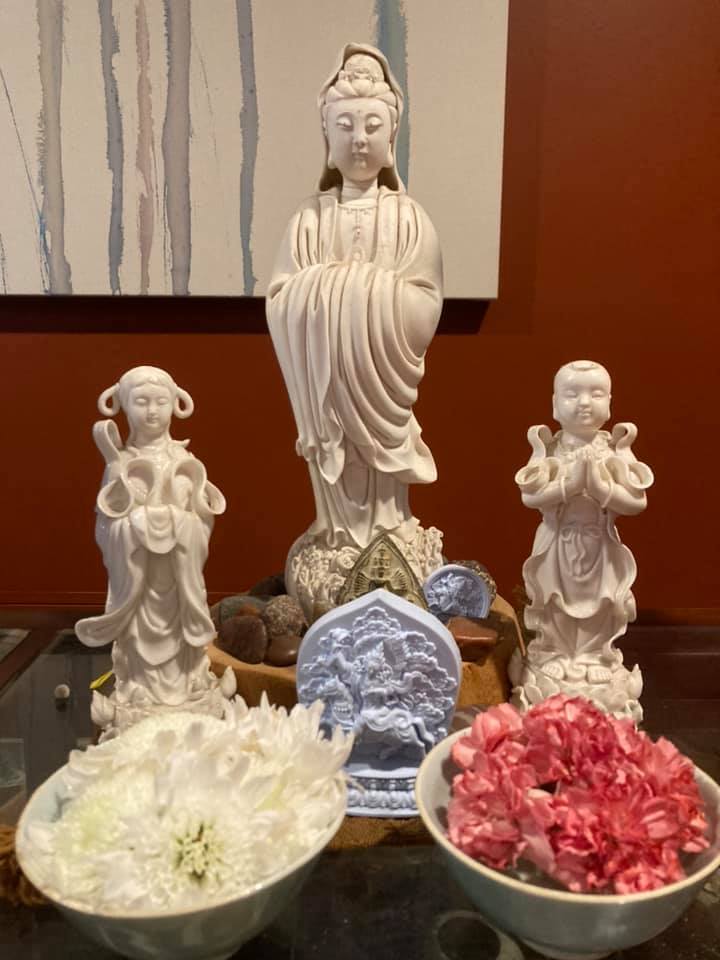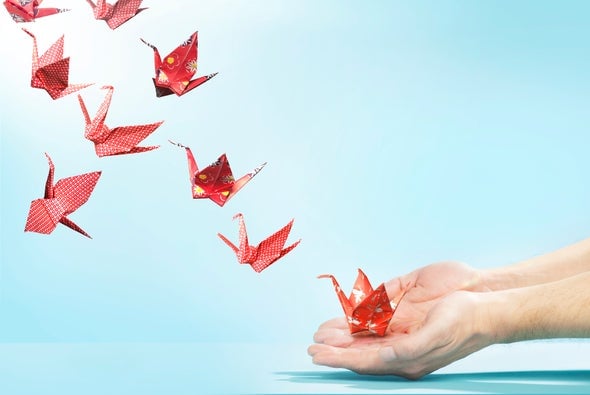
At first, one should seek extensive listening.
In the middle, reflect on all the texts so that they become advice,
Finally, one should practice day and night.
All this should be dedicated to the flourish of the Buddha’s teachings.
-Jé Tsongkhapa, founder of Gelukpa Lineage (1357-1419)
To paraphrase Confucius, learning without thinking is wasteful. Similarly, the Buddha strongly urged his students “to reflect” (Sanskrit: cintā, Tibetan: sampa བསམ་པ་ & Chinese: si 思) or to analyze and contemplate what one has heard or learned. We are to investigate the teachings as vigorously as a goldsmith tests the purity of gold before buying it.
Essentially a blog, here I share with you reflections on various aspects of the Buddhist path , insights that come to me while on the road, something from the four or five books I’m reading simultaneously, and sometimes seemingly random ramblings. This is where I shares my wonderings and my wanderings. Come back on a regular basis or sign up to be notified of updates!
MAHAMUDRA OF THE TRAINING
by Dorjé Lopön Hun Lye
An excerpt from “Self-Liberated Wakefulness” (a terma teaching discovered by Jamyang Khyentse Wangpo and given to Jamgön Kongtrül Lodrö Thaye). This excerpt comes at a point in the text where Padmasambhava has just briefly discoursed on the first three out of four points of Mahāmudra: Mahāmudra of the view, Mahāmudra of the meditation and Mahāmudra of the fruition. And now he begins discussing Mahāmudra of the training, first quoting a tantra that says:
In order to bring forth sequential blessings,
There is the Mahāmudra of the training.
Then Padmasambhava continues:
“You must request the oral instructions from a master who possesses transmission, realization, and compassion. From that day onwards, you must supplicate him, regarding him not as a form-body (rupakaya) but only as dharmakaya. Unable to bear any separation, dissolve into him with deep yearning, so that through the master’s blessings the realization of Mahāmudra arises spontaneously. This – the singularly sufficient shortcut with no need to depend upon any other method among the two stages – is known as the Mahāmudra of the training.”
“To use an analogy, when the sun is bright and you have an undamaged, untainted lens, dry moss will catch fire the very moment you correctly arrange the three. Similarly, when a master’s blessings, your own devotion, and pure sincerity of your being all coincide, the original wakefulness that is Mahāmudra automatically arises by simply making supplication with deepfelt yearning. “
TWO STORIES
by Dorjé Lopön Hun Lye
Two stories that I heard from Khenpo Choephel of Drigungtil Monastery in the context of commenting on verse 3 of chapter 6 of The Single Intention (Tib. Gongchik): “All phenomena are manifestations of momentary thoughts.”
Dampa Yarpo Overcomes Spirit Possession
There was once a man called Dampa Yarpo who lived during the time of Jikten Sumgön who was temporarily possessed by a spirit being. As he was afflicted and unable to travel, he sent a messenger to Jikten Sumgön to seek a cure. At that time, Jikten Sumgön was in retreat but through his attendant he advised Dampa Yarpo to meditate on Avalokiteśvara in the aspect of the Lord of Great Compassion (Avalokiteśvara in the eleven-headed, thousand-eyed and thousand-armed form).
Dampa Yarpo did as advised. That night, he had a vivid dream where the wrathful Yamarājā (Lord of Death) came to him and instructed him to meditate on him instead of the Lord of Great Compassion – implying that it would be more efficient to meditate on a wrathful deity in facing a spirit problem. Luckily for Dampa Yarpo, his devotion to Jikten Sumgön was unwavering and so he ignored the dream. In fact, if he had listened to the advice he received in his dream, the afflicting spirit would have continued to harm him as Dampa Yarpo’s mind would have abided in anger and wrath towards the spirit even if he was meditating on Yamarājā.
But because his mind was generating itself as the Lord of Compassion, the spirit could not continue to harm Dampa Yarpo. Thus on the third night, he had another dream in which he saw the spirit leaving his body in a weakened state and went towards the river in front and below of Drigungtil Monastery and left the area. He woke up completely freed of the affliction.
A Leper Cheats Death
A leper once came to Phakmo Drupa to seek a cure and was told my Phakmo Drupa to meditate on Phakmo Drupa himself. The leper did as told and in that very evening the spirit that was causing the leprosy appeared and wondered aloud, “This guy that I have caused to have leprosy is always here when I come looking for him, where is he this evening?” Instead of seeing the leper, all the spirit could see was Phakmo Drupa himself and not the leper. Since the spirit’s karmic connection to cause harm was only in relation to the leper and not to Phakmo Drupa, he had no choice but to leave when the leper apparently “disappeared” and could not be found. In his place was Phakmo Drupa!

“…Meditate on obstructors and obstacles
as being your own root-guru.
If you remain undistracted in this state,
then whatever obstructors or obstacles there may be
will certainly be transformed into the non-dual state—
the birthless, luminous state of your mind—
just like snow falling onto a lake.”
– Kyobpa Jikten Sumgön

For most of us, our bodies are now moving in only one direction – no part of our precious body is going to “get better.” It’s just how it is even if everyone’s who’s trying to sell us something will try to tell us otherwise – tell us what we want to hear but not how things are.
But as for this mind of ours, it on the other hand can get better. It can get better until the very end of our current life and even beyond. It can always get more spacious, less stressed. Always more content, less needy. Our minds can always be kinder to ourselves and to others. And this is good news.

There was an episode from the Buddha’s life that illustrates the power of open-heartedness (read: generosity). Once the Buddha and his disciples were passing through a kingdom and decided to stop for a few days when residents of the town invited them to stay and the king invited the Buddha to teach. Everyone was vey excited and great effort was made to host the Buddha and his disciples. In particular, everyone busied themselves with preparing lamp offerings to illuminate the teaching venue for the evening teachings that the Buddha was going to do.
There were magnificent oil lamps of all types – gold lamps, silver lamps, lamps encrusted with jewels, single flame lamps, multiple flames lamps, etc. All the wealthy and powerful tried outdoing each other in their lamps. Ordinary folk prepared more modest lamps but impressive nonetheless. At that time, there was an elderly woman who was a beggar and homeless. She barely knew when she was getting her next meal, much less having any lamps to offer. But nonetheless she was so taken and inspired by the presence of the Buddha and his noble disciples that she was determined to offer a lamp. Looking around, she found a half-broken shell of a coconut that she could use as a lamp. Then she cut a little piece of cloth from her rags to form a wick. The biggest challenge was the fuel – where can she get any oil for this lamp when she has no ability to buy any? She wandered from place to place trying to beg some oil but nobody was willing to give her any. Finally, at the last oil-seller, she thought of an idea: she would cut her hair, her hair that has never been cut all her life and try to exchange her hair for some oil. In ancient India, hair was something that you did not cut especially for women as it represented their dignity and beauty. But people would buy hair to add as extensions or to make into wigs. The oil-seller accepted her barter and gave her a scoop of oil to fill her half-broken coconut shell of a lamp. And off she went to offer her lamp.
When she arrived at the teaching venue, it was already dusk and many many brilliant lamps were illuminating the space. As she was too embarrassed by her lamp, she placed it way at the back, near the entrance of the venue, by the side of the door and sat down to listen to the Buddha teach. As it turns out, on that evening, the Buddha’s adversarial cousin, Devadatta was intent on causing a disruption to the teachings. Through his ability to conjur magic, Devadatta caused winds to blow and extinguish all the lamps, one after another. But it did not take long for everyone present to notice that as the strong gusts of winds quickly extinguished each lamp, one little lamp remained burning. And as more lamps lost their brilliance, the beggar woman’s lamp burned brighter and brighter. Devadatta whipped up his magic further and tried to extinguish that last lamp but to no avail. Instead, even with all the other hundreds of lamps extinguished, the venue was brighter than before and all due to the one half-broken coconut shell lamp offered by the beggar woman. This, the Buddha taught, is the power of open-heartedness, the power of generosity, of pure intentions. The one lamp that excels all lamps!

Even though you count all the ways
Of repaying the kindness of others—
Such as giving rise to bodhicitta, granting empowerments,
And giving the sublime Dharma—
As long as you cannot fulfill their wishes,
It will be impossible to be in harmony with them.
Therefore, with the wish to benefit others Endeavor to abandon grasping.
– Kyobpa Jikten Sumgön
